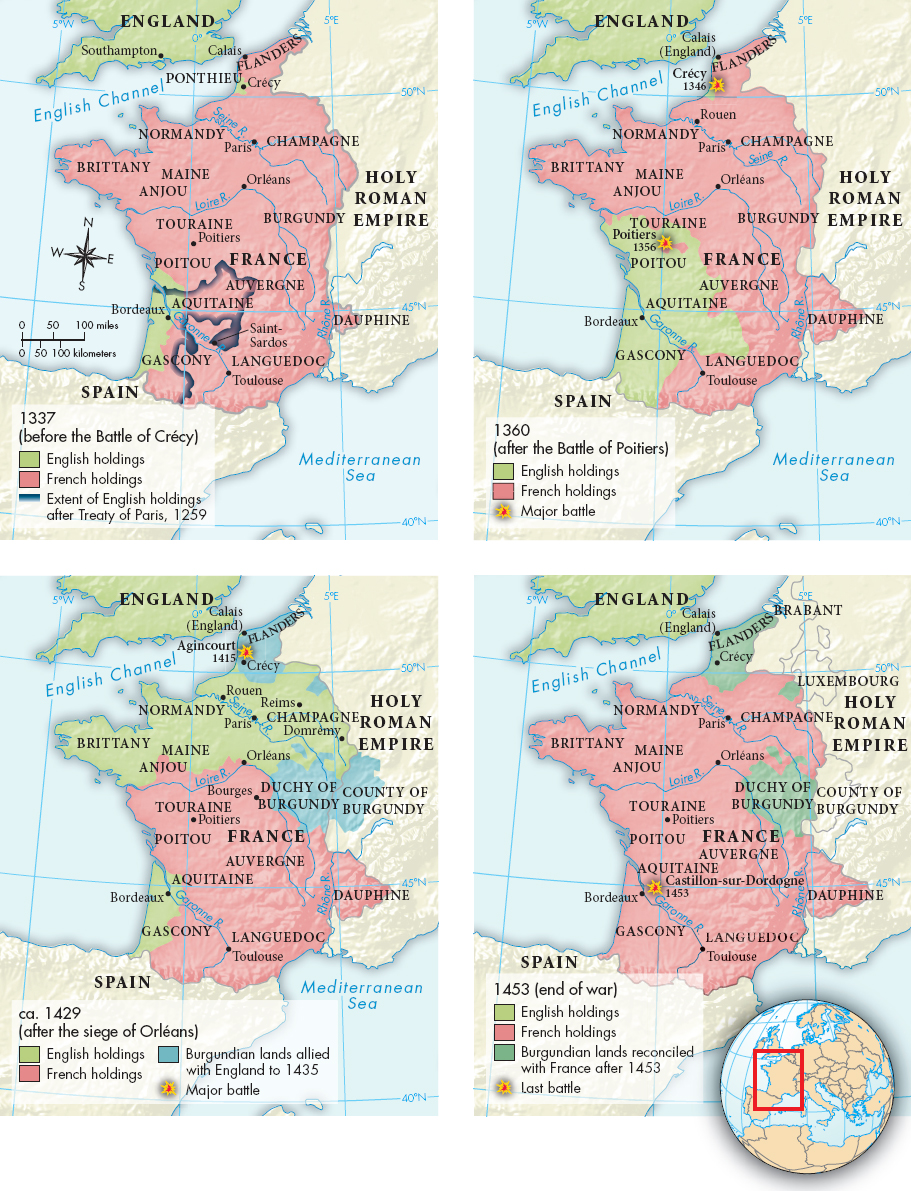English Successes
The war began with a series of French sea raids on English coastal towns in 1337, but the French fleet was almost completely destroyed when it attempted to land soldiers on English soil, and from that point on the war was fought almost entirely in France and the Low Countries (Map 11.2). It consisted mainly of a series of random sieges and cavalry raids, fought in fits and starts, with treaties along the way to halt hostilities.

During the war’s early stages, England was highly successful. At Crécy in northern France in 1346, English longbowmen scored a great victory over French knights and crossbowmen. Although the aim of longbowmen was not very accurate, the weapon allowed for rapid reloading, and an English archer could send off three arrows to the French crossbowman’s one. The roar of English cannon — probably the first use of artillery in the Western world — created further panic. Edward III’s son, Edward the Black Prince, used the same tactics ten years later to smash the French at Poitiers, where he captured the French king and held him for ransom. Edward was not able to take all of France, but the English held Aquitaine and other provinces, and allied themselves with many of France’s nobles. After a brief peace, the French fought back and recovered some territory during the 1370s and 1380s, and then a treaty again halted hostilities and both sides concentrated on conflicts over power at home.
War began again in 1415 when the able English soldier-